





| Azure Damselfly (Coenagrion puella (Linnaeus, 1758)) |






|
|
Scientific name: Coenagrion puella (Linnaeus, 1758) Common name: Azure Damselfly French name: Agrion jouvencelle Order: Odonata Suborder: Zygoptera Family: Coenagrionidae Wingspan: 50 mm. Biotope: Any habitat next to stagnant water, even in altitude. Geographic area: Europe except most part of Scandinavia. Asia as far as the Caspian sea. Flight time: Early April to late September with a peak in June and July. |
The male's abdomen is blue with a black U-shaped mark on the second segment. The ninth segment shows a E-shaped mark, but with many variations. The thorax and the abdomen of the female are green with large black marks. While mating, the male clasps the female by her neck by means of its anal appendages. The female bends its abdomen to touch the male's reproductive organs. This is called the mating wheel. While laying the eggs, the male holds the female by means of its anal appendages. The female lays the eggs under the leaves of water plants. This is called the "tandem" position. The larvae, carnivorous, live under water, and moult into damselflies at spring. |
| [To know more about the Azure Damselfly] [Next picture] [Top] |
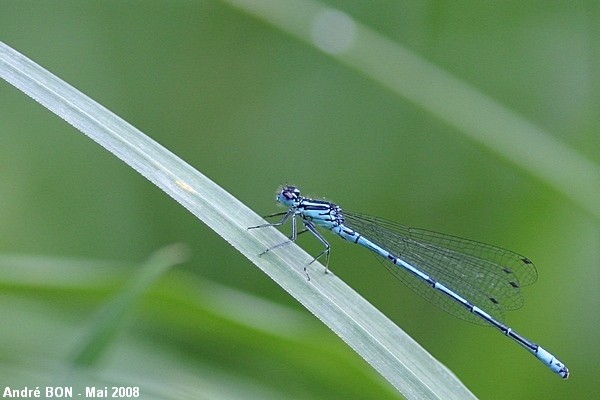
|
You can see the U-shaped mark on the second abdomen's segment. |
| [To know more about the Azure Damselfly] [Next picture] [Previous picture] [Top] |
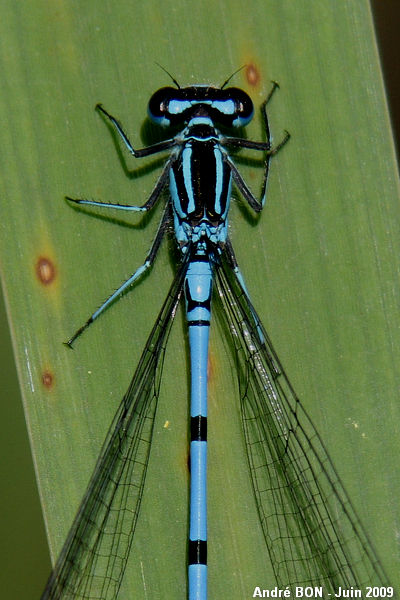
|
Here is a top view so that you can better see the shape of the mark on the second segment of the abdomen. |
| [To know more about the Azure Damselfly] [Next picture] [Previous picture] [Top] |
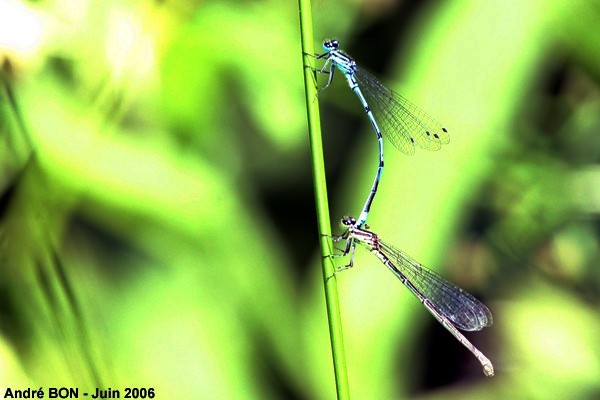
|
Here is what is called the tandem. |
| [To know more about the Azure Damselfly] [Next picture] [Previous picture] [Top] |
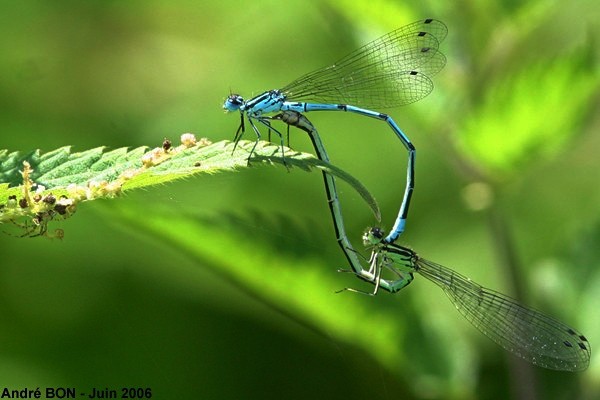
|
Here is what is called the mating wheel. |
| [To know more about the Azure Damselfly] [Next picture] [Previous picture] [Top] |
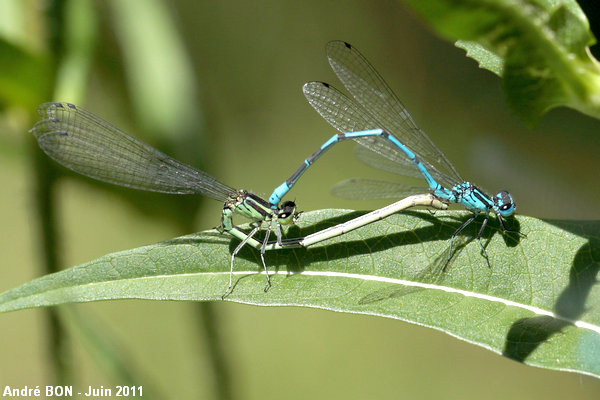
|
The Azure Damselfly is a very common and widespread species. You can observe many mating wheels next to water points. |
| [To know more about the Azure Damselfly] [Previous picture] [Top] |
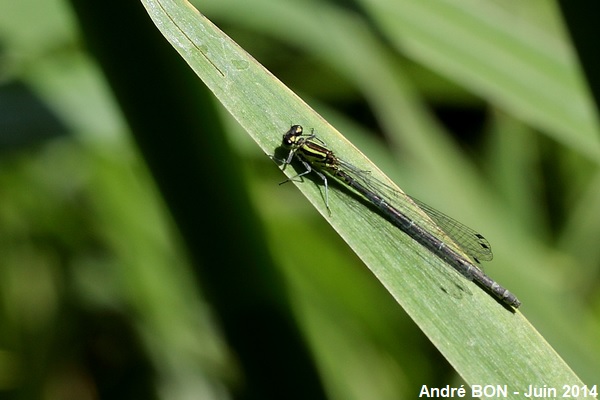
|
Here is one female. |